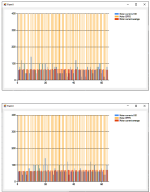mxlemming said:The other problem with the interrupt pin/timer count is that normally hall sensors are buried inside motors and the noise in their lines can be terrible.
I too had this doubt (even if the inputs are configured as schmitt trigger) and before moving to the interrupt implementation, I did a test by storing the last 5 Hall states detected by the interrupt (a 16-bit variable is enough) and in several minutes of testing, an incorrect sequence was never detected. And so, at least for the TSDZ2, it seems reliable.
I must also say that the Android app has helped a lot in running the various tests necessary for development. Without the app it would have been much more difficult.


